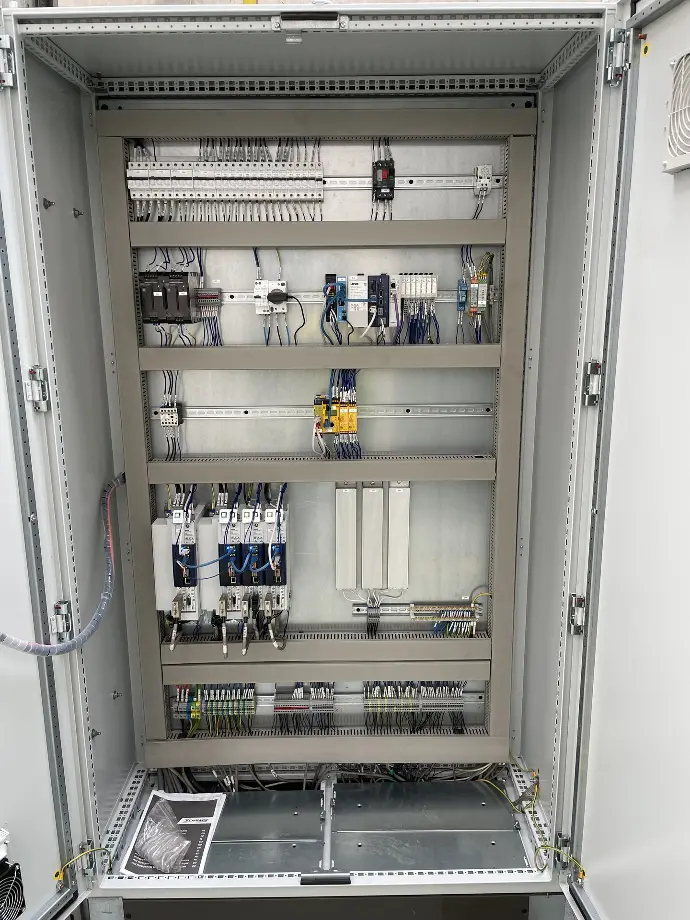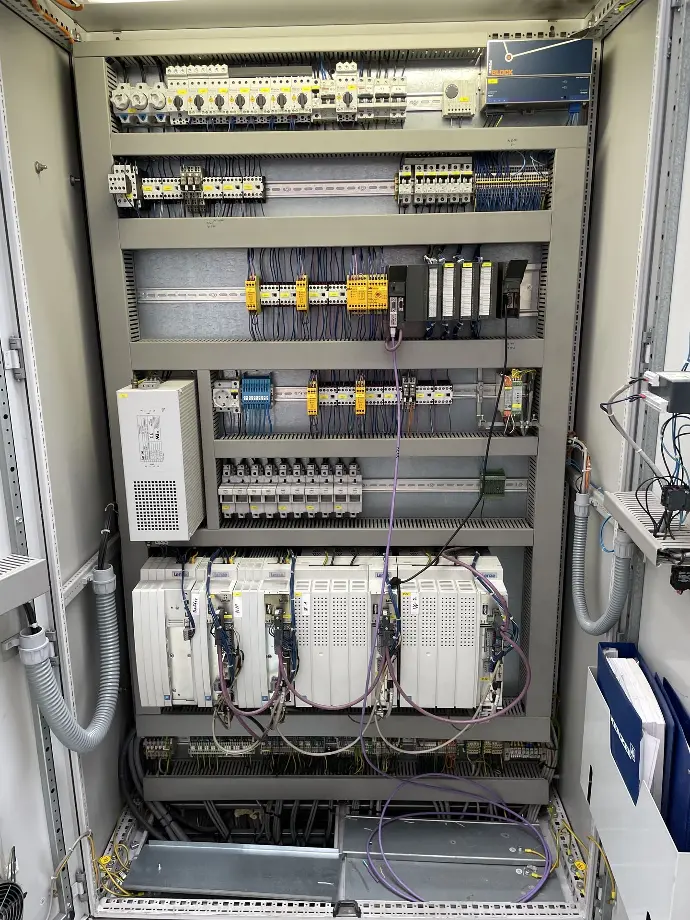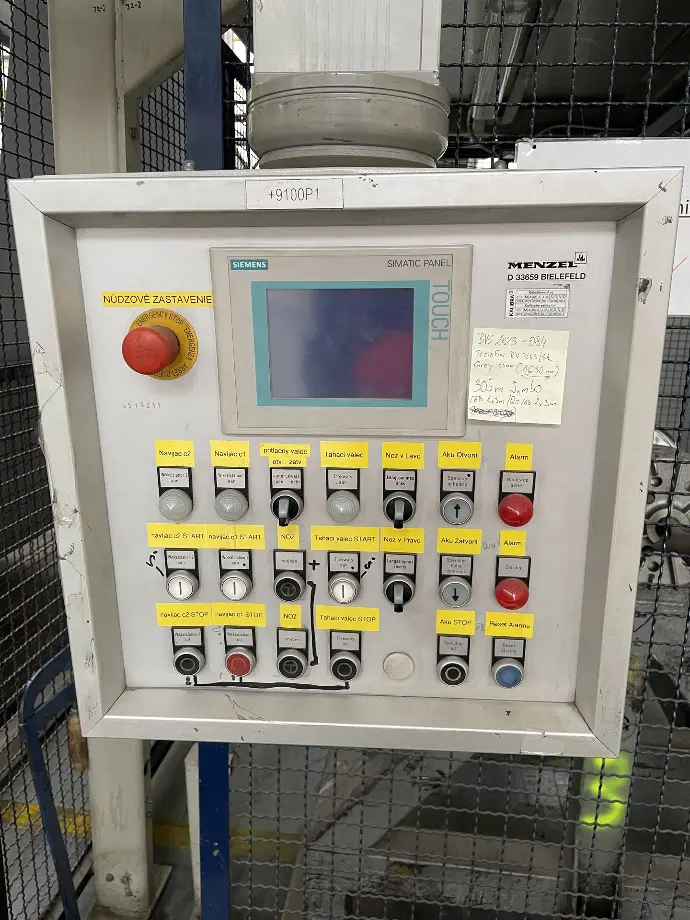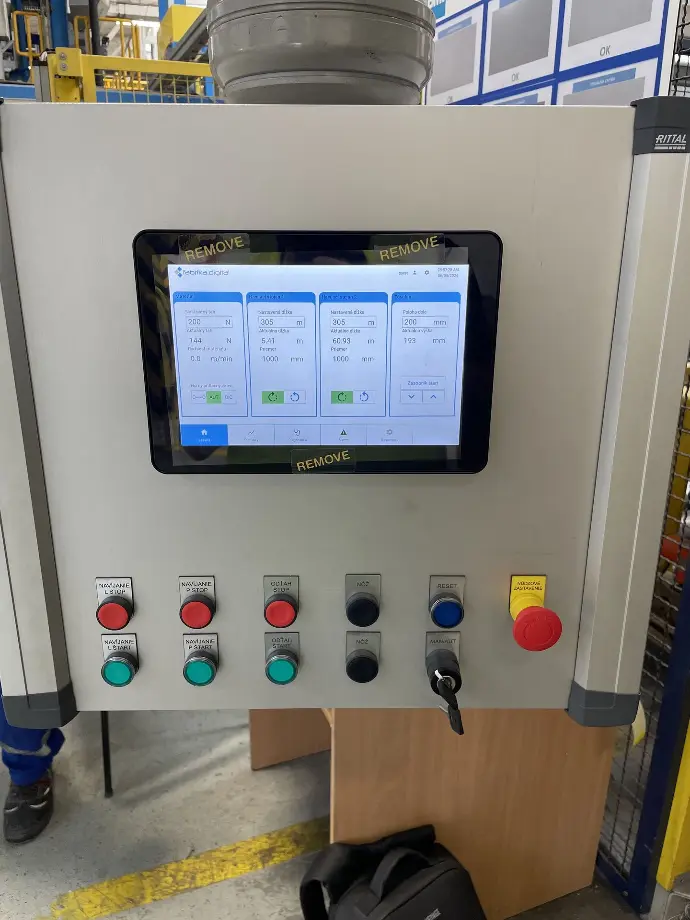Winding device JUMBO
The winding device is designed for the efficient winding of rubber roofing material used to cover building roofs. It consists of two separate winding units, with only one of them operating at any given time. The second unit is ready for immediate use during the roll change, eliminating downtime and allowing production to continue uninterrupted. This solution ensures that the machine before the winder does not need to be stopped, thus optimizing production continuity.
A material accumulator is installed between the winder and the machine, which stores the necessary volume of material during roll changes. This accumulator prevents any downtime and enables a smooth transition between winding units.
Material pulling is carried out using a pull roller located above the winders. The pulling speed must be synchronized with both the production line speed and the winding units' speed to ensure optimal material tension. This tension is crucial for the material to be properly and evenly wound onto the roll, ensuring a high-quality wound product.
CUSTOMER REQUIREMENTS
- Complete overhaul of the distribution cabinet (wiring, inverters, safety elements, power supplies, safety, the cabinet itself, PLC, inputs/outputs)
- Redesign of the control panel (HMI display, control buttons, new enclosure)
- Motor replacement
- Replacement of the safety unit (PILZ)
- Complete reprogramming of the winding device
- Optimization of the winding process, improvement of roll change efficiency, and elimination of material wrinkling
Preparation
Identification and procurement of all necessary components
Production
Manufacturing of the distribution cabinet, cabling...
Testing
Testing sensors, commissioning motors, PLC, invertors
Programming
Final programming, machine startup
BLOK DIAGRAM

Picture 1. Control cabinet before reconfiguration Picture 2. Control cabinet after reconfiguration
Picture 3. Old Control panel Picture 4. New Control panel
REPLACEMENT OF MOTORS AND THE SAFETY UNIT
As part of the machine modernization, the main winding motors and the pull roller motor were replaced. This replacement involved the complete removal of the old motors, installation of the new ones, and their integration into the system. The motor replacement process required precise coordination, not only due to the physical placement of the motors but also for their electrical connection and integration into the control system. The new motors offer higher efficiency, better performance regulation, and reduced energy consumption, contributing to the overall modernization and optimization of the machine's operation.
The old Pilz safety unit was replaced with a new, more compact unit that allows communication with the control system.
PROGRAMING
The goal of the programming was to optimize the entire winding process. Care had to be taken to ensure that the synchronization of pulling forces between the pull roller and the winding units was consistent to prevent excessive tension or slack in the material. The pull of the roller was controlled by a load cell placed at the winder's input, which provided feedback for force regulation.
The tension and speed of the winders were dynamically managed using specialized FAST modules from Lenze.Learn moreThese modules enabled automatic reduction of tension as the diameter of the wound material increased, ensuring optimal machine operation. The calculation of the current winding diameter was also managed by these FAST modules, which are designed for precise control of winding processes. These modules represent an advanced solution for complex real-time control tasks, ensuring high efficiency and reliability throughout the system.
After reprogramming the machine and fine-tuning the mechanical irregularities discovered during the overhaul and testing, the entire winding process and roll changes were made more efficient. Additionally, the wrinkling of the material, which was the customer's primary concern, was eliminated.





